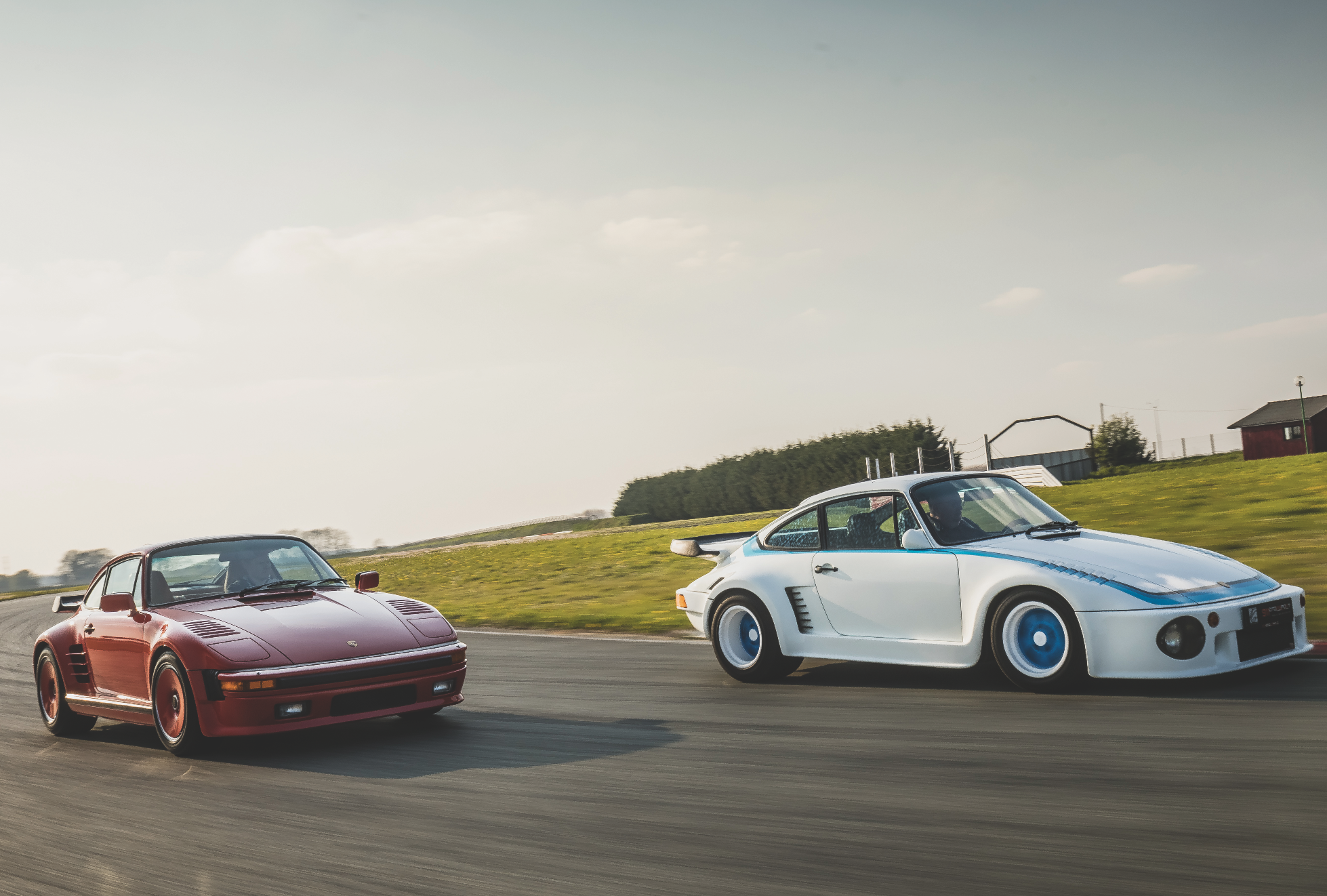Die Flachbaue
Porsche’s 930 Turbo was a game-changer for its 911 sports car. Utilising groundbreaking exhaust turbocharging technology for a production road car, the Turbo was faster, wider and more luxurious than any 911 before it.
Porsche’s humble sports car was quickly propelled into the stratosphere of the supercar, attracting attention – and orders – from the elite and mega-wealthy along the way.
Ultimately the goal was to homologate the Turbo for racing purposes, a move which gave rise to a prolonged period of competitive success with forced induction which still exists to this day.
And, with the help of those race cars, the 930 Turbo was responsible for spawning an entirely new legend within our Porsche lexicon: the flatnose.

The story of the flatnose goes right the way back to 1976 with the 935 (short for Group 5 930). The work of one Norbert Singer, his famously wild interpretation of FIA competition rules bred a racer which bore fleeting resemblance to a 911, underneath what was a vastly reworked body.
It was much wider than the road car it was based on, with an outrageously flared rear and – crucially – a new front end. This radical restyling ditched the 911’s traditional, upright front fenders for a flat, slab-like design from the base of the original windscreen, sloping right down to the car’s nose.
This was all in the name of greater aerodynamic efficiency, and the flachbau 911 was duly born. The car first appeared at Mugello in the slantnose configuration, but as there was quite some opposition (mainly from BMW), the slantnose received its normal nose treatment for the second race of the World Championship at Vallelunga. Thereafter the car was returned to its slantnose look.

The modification quickly captured imaginations of fans around the world. Coachbuilders and tuning companies such as Kremer and Ekkehard Zimmerman began modifying 930 Turbos to flatnose specification, swapping out the original front fenders for a sloping design with pop-up headlights.
It didn’t take long for Porsche to appreciate the economic benefits of a flatnose movement among its fanbase either. TAG owner Mansour Ojjeh’s ‘935 Street’ of 1983 was the most notable factory conversion, though the popularity of factory flatnose requests led to the official formation of the Porsche Exclusiv department itself in 1986.
Here, Turbos were taken from the main production line and stripped down before being rebuilt by skilled craftsmen, using a steel flatnose and pop-up headlights, also incorporating cooling slats in the reprofiled front fenders in another nod to the company’s 935 racer.
It seems fitting that a road car modelled so intently on its competition equivalent should attract the interests of a group of racing drivers. The Guards red example you see here was part of a five-strong order from IndyCar competitors led by Roger Penske and Bruce Canepa in 1984. This was at a time, remember, when the 930 itself was not sold in the US.
Canepa’s solution to the problem was to have all five cars ordered in RoW specification, complete with matching ‘WP0ZZZ’ chassis numbers, though the batch still had to endure a lengthy federalising process once they landed Stateside in order to be allowed into the country. Canepa’s patience and understanding of the rules here would go on to serve him well in his quest to bring the 959 to the States just a few years later.
For the full feature on these incredible Porsche slantnoses, pick up your copy of Total 911 issue 179 in shops now or get it delivered to your door via here. You can also download a digital copy with high definition bonus galleries to any Apple or Android device.

Comments (0)